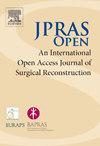Treating Facial Scars using Polydioxanone Threads
IF 1.5
Q3 SURGERY
引用次数: 0
Abstract
Traditional scar treatments, such as laser therapy, chemical peels, and surgery, are expensive and require long recovery times. Polydioxanone (PDO) threads offer a minimally invasive and cost-effective solution that enhances collagen production and skin texture.
This study aimed to evaluate the effectiveness of PDO threads in the management of atrophic facial scars due to the lack of clinical research on this topic.
A prospective clinical study was conducted on 20 patients with facial atrophic scars caused by accidents or previous surgical procedures. The patient and observer scar assessment scale was used to evaluate the scars from the observer's and patient's perspectives at three-time points for each patient. The observer assessment included the following variables: vascularity, pigmentation, thickness, pliability, surface area, and homogeneity. The patient assessment included the following variables: pain, color, stiffness, thickness, appearance, and itching.
Statistically significant improvement was observed in atrophic facial scars treated using PDO threads in all observer variables (p<0.001). Significant improvement was recorded in the patient's color, stiffness, thickness, and appearance variables; however, itching sensation increased between T0 and T1 with no statistically significant differences in the pain variable.
Within the limits of this study, we conclude that PDO threads are known for ease of use, availability, and biocompatibility. They biodegrade naturally, reducing irritation risk. By stimulating collagen, PDO threads promote natural skin regeneration and thereby improve scars without using foreign materials. The treatment method is safe and minimally invasive, with short recovery times. Clinical studies showed significant improvements in atrophic facial scars with high patient satisfaction.
求助全文
约1分钟内获得全文
求助全文
来源期刊

JPRAS Open
Medicine-Surgery
CiteScore
1.60
自引率
0.00%
发文量
89
审稿时长
22 weeks
期刊介绍:
JPRAS Open is an international, open access journal dedicated to publishing case reports, short communications, and full-length articles. JPRAS Open will provide the most current source of information and references in plastic, reconstructive & aesthetic surgery. The Journal is based on the continued need to improve surgical care by providing highlights in general reconstructive surgery; cleft lip, palate and craniofacial surgery; head and neck surgery; skin cancer; breast surgery; hand surgery; lower limb trauma; burns; and aesthetic surgery. The Journal will provide authors with fast publication times.
 求助内容:
求助内容: 应助结果提醒方式:
应助结果提醒方式:


